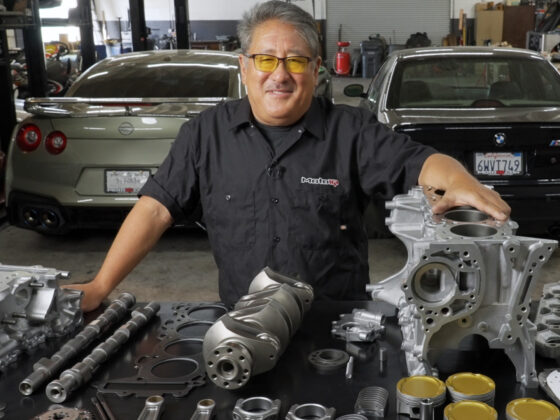
We are starting to put together the SR20DET for our car. Our goals are to have a wide powerband and lots of torque while limiting the revs to the stock 7700 rpm. We are keeping our revs down for drift car valvetrain stability. We also want to be able to vary the power from 300 to 400 plus, 300 for GLTC racing to 400 for drifting. we are also building the engine for maximum durability and reliability and hope to get two seasons out of it in between refreshes. We enlisted the help of CTP Cryogenics, WPC Treatment, JE Pistons, Wiseco, K1 Technologies, Enjuku Racing, and Dsport to built a stout bottom end for our project.

Before starting, we had our corroded and gross-looking block vapor honed at montune, montune has vaporhoned various parts for us in the past and they cleaned and restored our block to like new condition. After vapor honing, CTP Cryogenics cryotreated our block with their new proprietary aluminum process that they have recently developed. This process greatly increases the strength of aluminum parts, as well as improves wear of the bores and stress reliving of the block. CTP won’t tell us exactly what they are doing but I think the new process treats the metal in a way like artificial aging does to improve the strength.

After cryo, Dsport bored and honed our cylinders to 86.5mm. Dsport used a torque plate as the SR really distorts its bores with head bolt tension. We are running studs with higher torque so the use of a torque plate is even more crucial. The SR block also distorts cylinder #4 with the transmission bolt tension so Dsport reconfigured the positioning of the fixture that anchors the engine in their machining center to simulate the bellhousing as well.
After boring, a 480-grit hone was used to bring the bores to their final dimensions. A coarser hone was used as per the advice of Lake Speed Jr, the king of bore finishing, as this helps with oil retention which a boosted engine needs. This is rougher than our normal process so we are trying this for the first time. After honing. the bore was plateau honed to knock off the rough peaks of the surface to reduce friction and ring wear, especially during break-in.
Finally, the bore was WPC treated to give the surface a tougher, low friction, and long-wearing surface with micro dimples to help with oil retention as well. WPC is a Japanese surface treatment that bombards the surface with small ceramic media and dry film lubricant. The resultant finish with hard, wear-resistant and low friction. We use WPC extensively on our builds. You can read more details on WPC Here, We find that generally WPC at least doubles the life or more of wearing surfaces.

For a crank, we are using a K1 technologies, 92mm stroker crank, which will give us a displacement of just under 2200cc. Since we are not really revving high, we are not too worried about piston speed despite having a less-than-ideal stroke-to-rod length ratio. The stroke and the rod ratio should actually work together to help spool the turbo faster!




3 comments
Dreams.
What are the boundary conditions for the FEA images? Something looks a little strange in how forces are applied to the little and big end… Are they not treating it as a pinned connection with bearing loads for the application of the loads?
The load would not be pure compression as max load is a few degrees off of TDC.